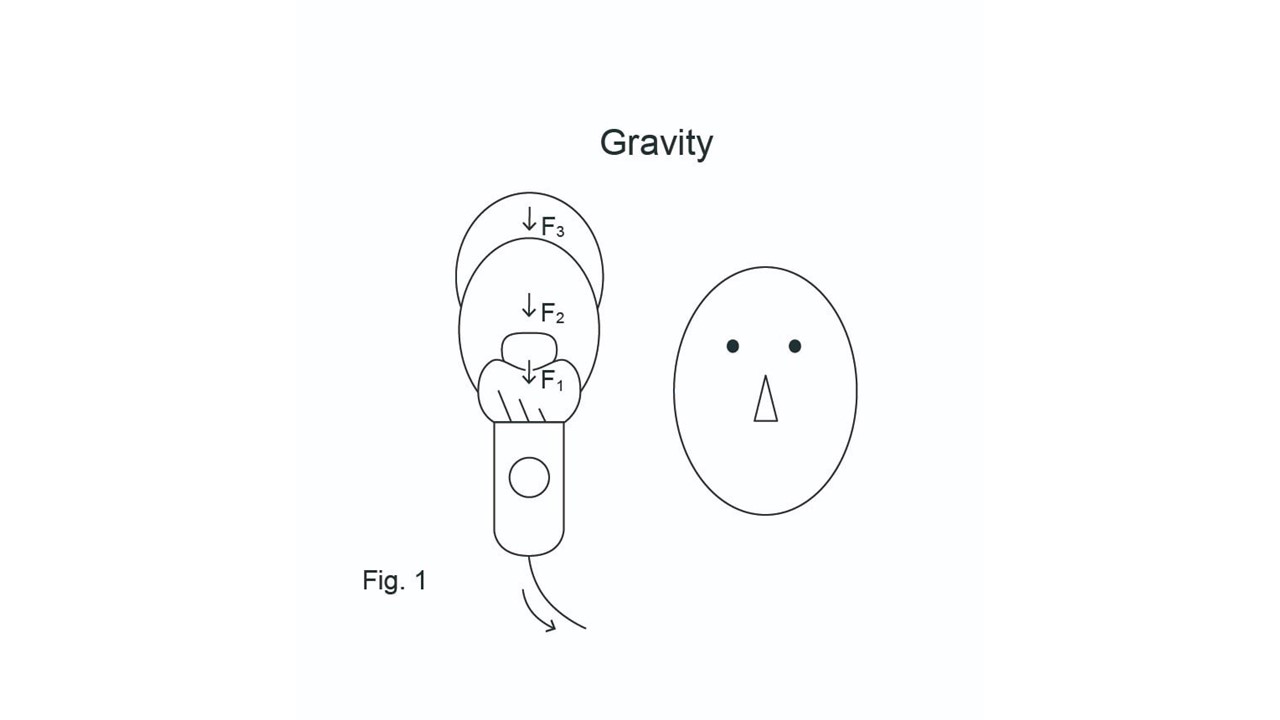Four Kinds of Forces Exerted on the Utricle
Abstract
Objective:
The utricle is commonly understood to detect gravity and horizontal linear acceleration. We hypothesized that it may also respond to vertical linear acceleration, horizontal angular acceleration, and centrifugal force.
Methods:
We performed six physical analogy experiments using deformable media, spring-mounted masses, and human squatting tasks (five healthy humans). Observations included deformation patterns and eye movement recordings.
Results:
(1) Submerged lead deformed the pudding, modeling gravitational deformation. (2–3) Spring-mounted masses deflected opposite to the direction of acceleration. (4) Human vertical motion did not elicit nystagmus. (5) Sudden rotation caused tangential deflection. (6) Constant-speed circular motion led to outward (centrifugal) deflection.
Conclusion:
The utricle can detect four distinct forces—gravity, horizontal and vertical linear acceleration, tangential angular acceleration, and centrifugal force—which suggests broader roles in postural control. Although utricular hair cells are continuously stimulated by Earth’s gravity, no nystagmus is observed under static conditions. Thus, static utricular activation alone does not elicit nystagmus. However, further studies are needed to quantify these effects and determine their physiological significance.
References
[2] Sadeghpour, S., Fornasari, F., Otero-Millan, J., Carey, J. P., Zee, D. S., & Kheradmand, A. (2021). Evaluation of the video ocular counter-roll (vOCR) as a new clinical test of otolith function in peripheral vestibulopathy. JAMA Otolaryngology–Head & Neck Surgery, 147(6), 518–525. https://doi.org/10.1001/jamaoto.2021.0176
[3] Curthoys, I. S. (1987). Eye movements produced by utricular and saccular stimulation. Aviation, Space, and Environmental Medicine, 58(9 Pt 2), A192–A197.
[4] Goto, F., Meng, H., Bai, R., Sato, H., Imagawa, M., Sasaki, M., & Uchino, Y. (2003). Eye movements evoked by the selective stimulation of the utricular nerve in cats. Auris Nasus Larynx, 30(4), 341–348. https://doi.org/10.1016/j.anl.2003.07.003
[5] Furman, J. M., Schor, R. H., & Schumann, T. L. (1992). Off-vertical axis rotation: A test of the otolith-ocular reflex. Annals of Otology, Rhinology & Laryngology, 101(8), 643–650. https://doi.org/10.1177/000348949210100803
[6] Epley, J. M. (1992). The canalith repositioning procedure: For treatment of benign paroxysmal positional vertigo. Otolaryngology–Head and Neck Surgery, 107(3), 399–404. https://doi.org/10.1177/019459989210700310
[7] Ichijo, H. (2023). Eye movements induced by stimulation of the utricle. Journal of Otolaryngology and Rhinology, 9, 133. https://doi.org/10.23937/2572-4193.1510133
[8] Shigeno, K. (2018). Observations of nystagmus during the Epley maneuver. Equilibrium Research, 77(3), 165–176. https://doi.org/10.3757/jser.77.165
[9] YouTube. (n.d.). Four kinds of forces exerted on the utricle. Retrieved from https://www.youtube.com/watch?v=fjiNigxzlQM
[10] Ichijo, H., & Ichijo, H. (2025). Reevaluating the role of otolith organs in nystagmus generation: An experimental approach. Modern Health Science, 8(1), 44. https://doi.org/10.30560/mhs.v8n1p44
[11] Ichijo, H. (2023). Three-dimensional analysis of per-rotational nystagmus. American Journal of Otolaryngology, 44(5), 103947. https://doi.org/10.1016/j.amjoto.2023.103947


This work is licensed under a Creative Commons Attribution 4.0 International License.
Copyright for this article is retained by the author(s), with first publication rights granted to the journal.
This is an open-access article distributed under the terms and conditions of the Creative Commons Attribution license (http://creativecommons.org/licenses/by/4.0/).









1.png)














